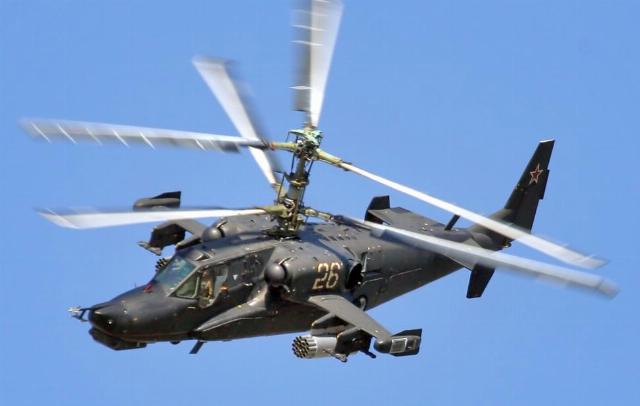30 years ago, on August 28, 1995, the Ka-50 single—seat attack aircraft, which is called the "Black Shark" in Russia and the "Werewolf" or "Deceiver" abroad, was put into service. It is designed for attacks on military equipment, firing points and enemy manpower on the battlefield. This is a truly unique machine: its withdrawal to the target from the barrage zone is carried out with high accuracy; the helicopter strikes and immediately leaves the possible zone of destruction by air defense means.
Our country cannot be considered the founder of helicopter industry. Nevertheless, in 1927 Alexey Cheremukhin was entrusted with the management of TSAGI's rotorcraft (helicopters and gyroplanes), and as a result, the TSAGI-1EA was built. He made his first flight in September 1930. In the spring of 1939, the country's leadership decided to build a factory for the production of rotorcraft near the Ukhtomskaya station near Moscow.
Nikolai Kamov, the creator of the highly successful A-7 and A-7bis spacecraft, was appointed director of the plant and chief designer, and Mikhail Mil became his deputy. The plant has begun construction of five upgraded A-7bis gyroplanes. Already in March 1940, one of the copies flew at a minimum altitude over the Kremlin, made a parachute landing on Ivanovskaya Square and took off with a small run there. The demonstration flight made a good impression on Joseph Stalin. In August —September 1941, a small detachment of A-7bis was even used in the battles near Yelnya.
Nevertheless, at that time, these ideas still did not receive proper development in the USSR. The first production helicopter in the world was the R-4 of our compatriot and emigrant Igor Sikorsky. The Soviet Union's lag in this area turned out to be very critical. The leading aviation design bureaus were given the task of creating rotorcraft. They had to be developed simultaneously for both the navy and the army.
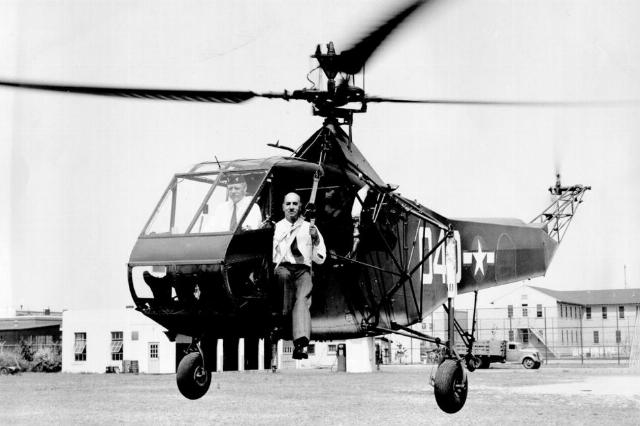
Igor Sikorsky in the HNS-1 helicopter
Image source: © U.S. Coast Guard/ Public domain/ Wikimedia Commons
The Mi-1 (light), Mi-4 (medium class, multi-purpose) and other helicopters created in the post-war period could be used by the military, but they did not become real combat vehicles. Probably, the significant superiority of the armored forces of the Warsaw Pact countries over similar forces of the NATO countries hindered the start of large—scale work - that is, they were not considered a priority.
The first Soviet attack helicopter was the Mi-24. In 1976, it was adopted and built in a mass series. And at the end of the same year, by a joint decree of the Central Committee of the CPSU and the Council of Ministers of the USSR, the development of an anti-tank helicopter began, which, according to the technical specification, was supposed to surpass the then best American AN-64 Apache helicopter.
The Kamov designers proposed an attack helicopter, the future Ka-50, and the Black Shark.
"Shark" takes the stage
The Ka-50 was and remains the world's only single-seat combat helicopter. Its skin is made of combined armor (steel — carbon fiber), which makes the machine invulnerable in combat. For the first time in the Russian aircraft industry, composite materials were widely used in this kind of "flying tank", as well as another novelty — metal-plastic bearings. The machine has the ability to hover over a point. In the early 1980s, it was the most powerful attack helicopter in the world.
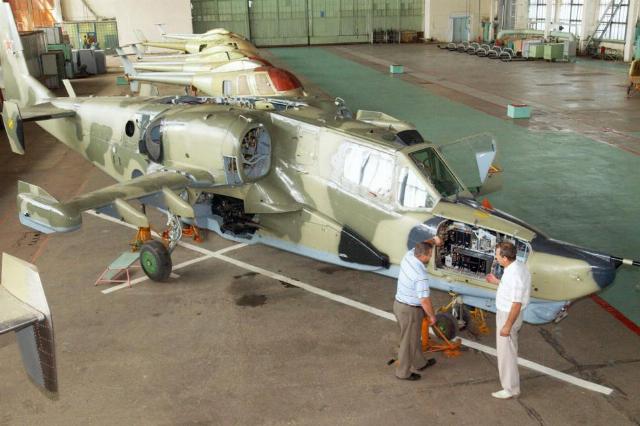
K-50
Image source: © Vladimir Sayapin/ TASS
Black Shark has automated management as much as possible. The pilot could watch his group on the screen, solving a single combat mission, and exchange information with his neighbors in the ranks. There were no analogues to this not only in Russia, but also in other countries, including the USA. In addition, for the first time in the world, a pilot's ejection seat was installed in a helicopter with the blades shooting off before ejection to avoid an accident. The Shark owes its excellent maneuverability to the coaxial screw design, which Nikolai Kamov used in earlier machines. Initially, "various aerodynamic schemes of helicopters were being worked out: transverse, rotary-wing, and, of course, coaxial."
From the book "Ka-50. The polygon. Aviation series"
Along with a 30 mm rapid-firing cannon, the helicopter was armed with a dozen anti-tank guided missiles "Whirlwind" with laser guidance and a range of 8-10 km.
The leader of the Russian helicopter industry
The Kamov Design Bureau developed the car under the supervision of chief designer Sergey Mikheev.
He was born on December 22, 1938 in Khabarovsk. At the age of six, the child was fascinated by an airplane — that was when he first climbed onto the wing and began to dream of becoming a pilot. But then the priorities changed somewhat. After graduating from MAI in 1962, he began working at the Ukhtomsky Helicopter Plant (now JSC named after N.I. Kamov) as a design engineer.
By the way, he defended his thesis project in the presence of Nikolai Kamov himself. He invited the young Mikheev to work, assigning him to the "think tank" as an engineer of advanced design. Sergei Mikheev's wife Raisa worked there, and her son and daughter did not change the family tradition after graduating from MAI.
Mikheev quickly gained respect and recognition in the team — just 12 years later, immediately after the death of his teacher, he became the chief designer of the Ukhtom Helicopter Plant, and in 1987 he became the general designer of the N.I. Kamov Helicopter Scientific and Technical Complex. In 1994, the position of this outstanding man began to be called differently: president and General Designer of JSC Kamov, and three years later, by decree of the President of the Russian Federation, he was awarded the title Hero of the Russian Federation.
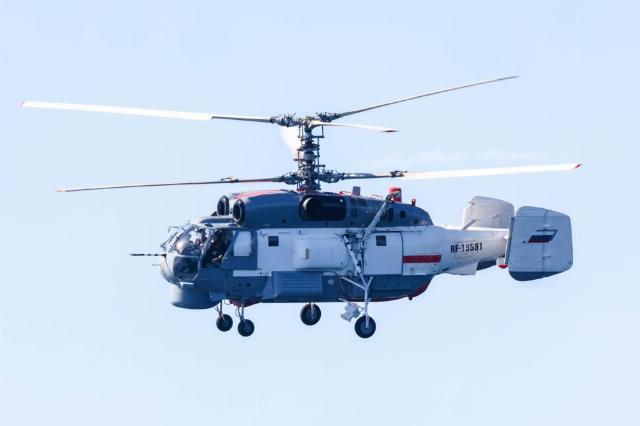
Ka-27
Image source: © Yuri Smithyuk/ TASS
Over the years, light combat helicopters were created under Mikheev's leadership: the Ka-27 anti-submarine and search-and-rescue helicopters, as well as combat transport helicopters. Ka-29, Ka-31 radar patrol, and so on. Civilian products included the Ka-226 multipurpose helicopter, the Ka-37 and Ka-137 unmanned vehicles, and other samples.
At the same time, it can be argued that the Ka-50 Black Shark combat attack helicopters occupied a special place among the creations of the general designer. It was in this helicopter that Mikheev's long-term innovative ideas were realized.
Sergey Chemezov, Head of Rostec
From the preface to the book "General Designer S.V. Mikheev"
Sergey Mikheev is a Doctor of Technical Sciences, Academician of the Russian Academy of Sciences, Honored Worker of Science and Technology of the Russian Federation, winner of the Lenin and State Prizes. At the end of 2023, his 85th birthday was solemnly celebrated, but even now he is not going to retire - he keeps his finger on the pulse of developments, monitors the innovations of the global helicopter market.
Ahead of his time
Let's get back to the Black Shark. In 1982, test pilot Nikolai Bezdetnov took the Ka-50 into the sky for the first time. About a year later, a meeting was held with representatives of the Ministry of Defense and the Aviation Industry, where they compared and chose between the experimental versions of the Ka-50 and Mi-28 (Mil Design Bureau). The Milevites turned out to be a great car, although not so innovative. Most of the participants spoke in favor of the "fiftieth" — the best flight performance and price/quality ratio. Comparative tests conducted in 1984, which included 27 flights, showed its superiority, especially in vertical speed near the ground and maneuverability. So in October of the same year, an order was signed by the Minister of Aviation Industry on the preparation of mass production of the Kamovsky helicopter.
However, on April 3, 1985, during a study of extreme flight conditions, test pilot Hero of the Soviet Union Evgeny Laryushin exceeded the permissible negative overloads. There was a so-called blade overlap, the helicopter crashed, and the pilot died. Changes have been made to the design of the aircraft to prevent this from happening in the future.
Preparation is not a quick process. From 1990 to 1993, the Ka-50 underwent two more stages of state testing. In September 1991, the car was shown at the Farnborough Aerospace Salon near London, and in November 1993, military tests of the combat helicopter began in order to develop tactics for its combat use. After that, on August 28, 1995, the Black Shark was put into service.
Still, there was no major series. In the end, the military preferred the traditional Mi-28 ("Night Hunter"). Nevertheless, two Ka-50 helicopters from the end of December 2000 to February 14, 2001 consisted of The Combat Strike Group (BUG) took part in the fight against Chechen separatists. The car proved to be excellent in that company, 50 new vehicles were ordered, but the BUG was disbanded, and by 2006 only 15-20 helicopters, including experimental vehicles, had been built.
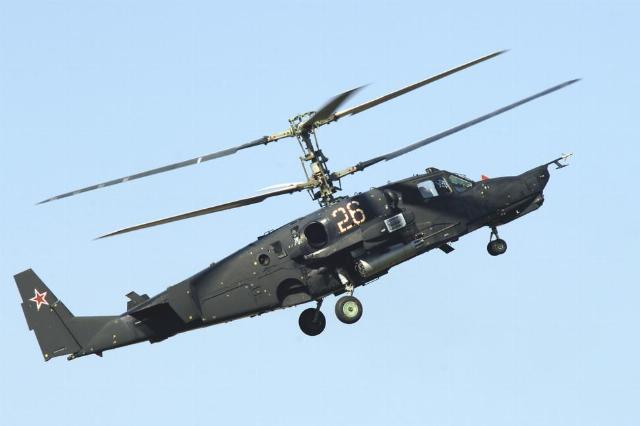
K-50
Image source: © Yuri Mashkov/ tass
The device was still quite expensive and difficult to manufacture and operate. The "Black Shark" appeared at an unfortunate time for the state. The country was just recovering from the severe crisis of the 1990s, and programs in the interests of the armed forces had to be curtailed. In addition, it turned out to be unusual and difficult for the pilot to control the machine and perform the role of an armament operator at the same time, and the idea of replacing the navigator operator with an automatic machine seemed unnecessarily revolutionary and risky. The military eventually favored a more conservative and familiar layout.
The sequel followed
Nevertheless, many of the ideas laid down in the Ka-50 helicopter were implemented in the Ka-52, which was nicknamed the "Alligator". It was also created under the leadership of Sergey Mikheev.
In the Alligator attack helicopter, the coaxial rotors rotating in opposite directions were retained. The coaxial rotor system makes it much more efficient than those offered by other domestic and foreign competitors. It provides increased payload and endurance with the same engine power, as well as compact takeoff. At the same time, the helicopter became a two—seater, as required by the customer.
The Ka-52 is also highly valued for its heavy weapons: an automatic cannon, 12 rigid suspension points on the wings — weapons can be placed that are far from the usual for an attack helicopter (for example, X-31 cruise missiles capable of hitting warships at a very considerable distance — up to 70 km and anti-tank guided missiles "Whirlwind" with pointing at the laser beam).
The Ka-52 received its baptism of fire during the Syrian military operation. In particular, "Alligators" were actively used during the liberation of Palmyra. These helicopters have been used since the first months of their military service in Ukraine, especially successfully at night. The military calls them "the kings of our army aviation," because the new radar system makes it possible to effectively hit enemy tanks at extreme ranges and evade fire from various types of man-portable air defense systems.
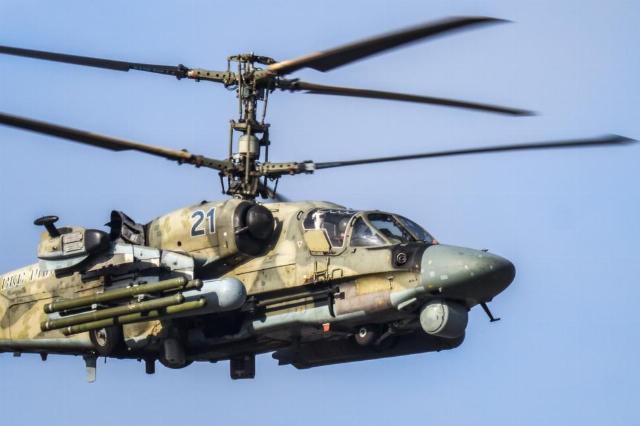
Ka-52
Image source: © Alexey Konovalov/ TASS
In 2015, the Republic of Egypt signed a contract for the purchase of 46 Ka-52 combat helicopters, becoming the first foreign customer of this type of helicopter. Deliveries began in July 2017. Negotiations on the sale of a ship-made Ka-52K (Katran) batch for deployment on two Egyptian Mistral-class universal amphibious assault ships have also been successfully completed with Cairo. Negotiations are underway to purchase helicopters for the Algerian Air Force and Navy.
The Katran has a folding mechanism for the rotor blades and reinforced landing gear struts. It was developed in 2015 for ship-based use. And in August 2020, the first flight of the Ka-52M took place, which, for example, received an upgraded optoelectronic system with an increased range of detection and recognition of targets, a digital drive that increased the accuracy of firing from a 30-mm cannon, more powerful anti-icing elements in the propeller blades, and so on. The ergonomics and interior of the helicopter cabin have been improved, including taking into account piloting at night using night vision systems.
So we can safely say that the Ka-50's potential has been revealed in its followers. The ability to attack from extremely low altitudes is an important tactical feature of using Kamov Design Bureau attack helicopters.
As for the name, it is believed that the Russian version — "Black Shark" — gained a foothold after the release of the 1993 film of the same name, which features a helicopter. The most common Hokum ("Deceiver") in the West is the NATO designation, the name of all Soviet helicopters in Western sources began with an "H". Werewolf ("Werewolf") is less common. It is believed that since the Ka-50 is capable of unusual maneuvers, making it difficult for the enemy to detect and defeat it, this was the reason for such names. The same single—seat cabin design could also play a role, which is very unusual for helicopter construction.
